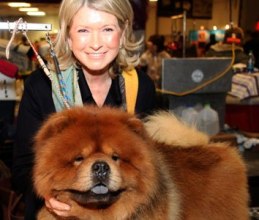Many people enjoy watching or participating in dog shows because of the thrill of competition and the joy of seeing so many beautiful dogs together. But shows can be intimidating for beginners who aren’t familiar with procedures or terminology. If you’re a dog show “newbie” read on!
The most common type of dog show is a “conformation” show. This means that dogs are judged based on how well they conform to the standards of their breed. The standards are published by kennel clubs, which are organizations dedicated to the study, breeding, exhibit, and advancement of purebred dogs. The American Kennel Club, established in 1884, presides over most well-known dog shows (it’s the largest not-for-profit purebred dog registry in the country). The most prestigious American dog show, Westminster, uses judges from the American Kennel Club (although Westminster dog shows began seven years before the AKC was founded).
In a conformation show, judges compare the dogs to their mental image of the “perfect dog” of that breed – keeping in mind both the physical appearance and the function the breed was originally bred for. Thus, dogs do not compete directly against one another – rather, the competition is a process of elimination to see which dog most closely matches that standard of its breed. Judges observe the dogs’ structure, temperament, and movement, using their hands to judge teeth, muscle, and bones. They observe the dogs’ profiles to estimate the general balance of their attributes, and watch the dogs’ gait (quality of movement) to see their features in action.
Winners in the lower levels of shows are gradually combined to narrow the winners down until finally the “Best in Show” is chosen. Dogs earn points for winning, and when they have sufficient points they are considered Champions. The lowest levels in shows are divided by breed, and divided again by classes of sex, or sometimes age. In AKC dog shows, each breed is divided into the following classes: Puppy (under 12 months), Novice (12-18 months), Bred by Exhibitor (the handler is a parent and breeder of record), American Bred, and Open (for those that don’t fit into other classes). The winners of all classes in each sex compete for the titles Winner’s Dog (male) and Winner’s Bitch (female). Then the Winner’s Dog, Winner’s Bitch and any dog that has completed its championship compete for Best of Breed. There is also a prize for Best of Opposite Sex (the opposite of the Best of Breed winner), and the better of the Winner’s Dog and Winner’s Bitch is awarded Best of Winners.

This, of course, is only for one particular breed of dog. In all breed shows, the winners of all breeds compete for group placements. The groups are: Sporting (dogs bred to hunt birds, such as Pointers, Retrievers and Setters); Hounds (dogs bred for hunting other game – Beagles, Bassets, Greyhounds, etc.); Working (dogs bred for pulling carts, guarding or search and rescue, such as St. Bernards and Dobermans); Terrier (dogs bred to hunt rats and other rodents); Toy (dogs bred to be companions of royalty, such as the Chihuahuas and Pomeranians); Non-Sporting (dogs that don’t quite fit into any category – Chows, Bulldogs, Dalmatians, Poodles, etc.) and Herding (dogs bred for herding sheep and other livestock – Collies, German Shepherds, Sheepdogs, etc.).
There are many reasons to visit a dog show. According to David Frei of the Westminster Kennel Club, one appealing aspect of a show is “the great variety – 165 breeds and varieties of dogs. You don’t see those every day when you go for a walk in the park.” It can be great entertainment to see so many sizes, shapes, and colors of dogs. In addition to the variety, he continues, is the thrill of competition, and the “alma mater factor” – being able to cheer on your favorite breed of dog. Frei’s strongest advice for first-time (or even experienced) spectators is to go back to the benching area – it can be the best part of the show. In a “benched” show like Westminster, he explains, “dogs are required to be in a specific area when they’re not being exhibited.” Especially if you’re thinking about acquiring a particular breed of dog, you should visit breeders, parents, and dogs of that breed – get “up close and personal.” That’s what they’re there for, Frie says – to educate the public about their favorite breeds.
Now that you’re not quite so lost, would you like to visit a dog show? Here are some more tips for would-be spectators:
• Be sure to study a catalog or schedule to see where each breed is and when its competition will take place.
• Check out the vendors and information booths – many kennel club booths offer helpful information for the curious.
• Wear comfortable shoes – you will probably be walking or standing a good deal of the time.
• The grooming area might be open to spectators. If so, take a look and schmooze with the professional groomers. Just don’t pet the dogs – in the grooming area or elsewhere. Their tresses might be ready for judging, and you don’t want to muss them.
Professional handlers and breeders will be happy to talk to you. Keep in mind that they might be a bit preoccupied if their dog hasn’t been shown yet – wait to approach them until after their role in the competition is over.
Some shows prohibit baby strollers. Dog shows might not be the best place for very young children, they might be bored, the shows are often crowded, and children might be tempted to yank a prize dogs’ fur.
For more info visit: www.westminsterkennelclub.org.
For the Best that Pet Lifestyle has to offer follow Wendy Diamond on Facebook, Twitter, and right here at AnimalFair.com!
